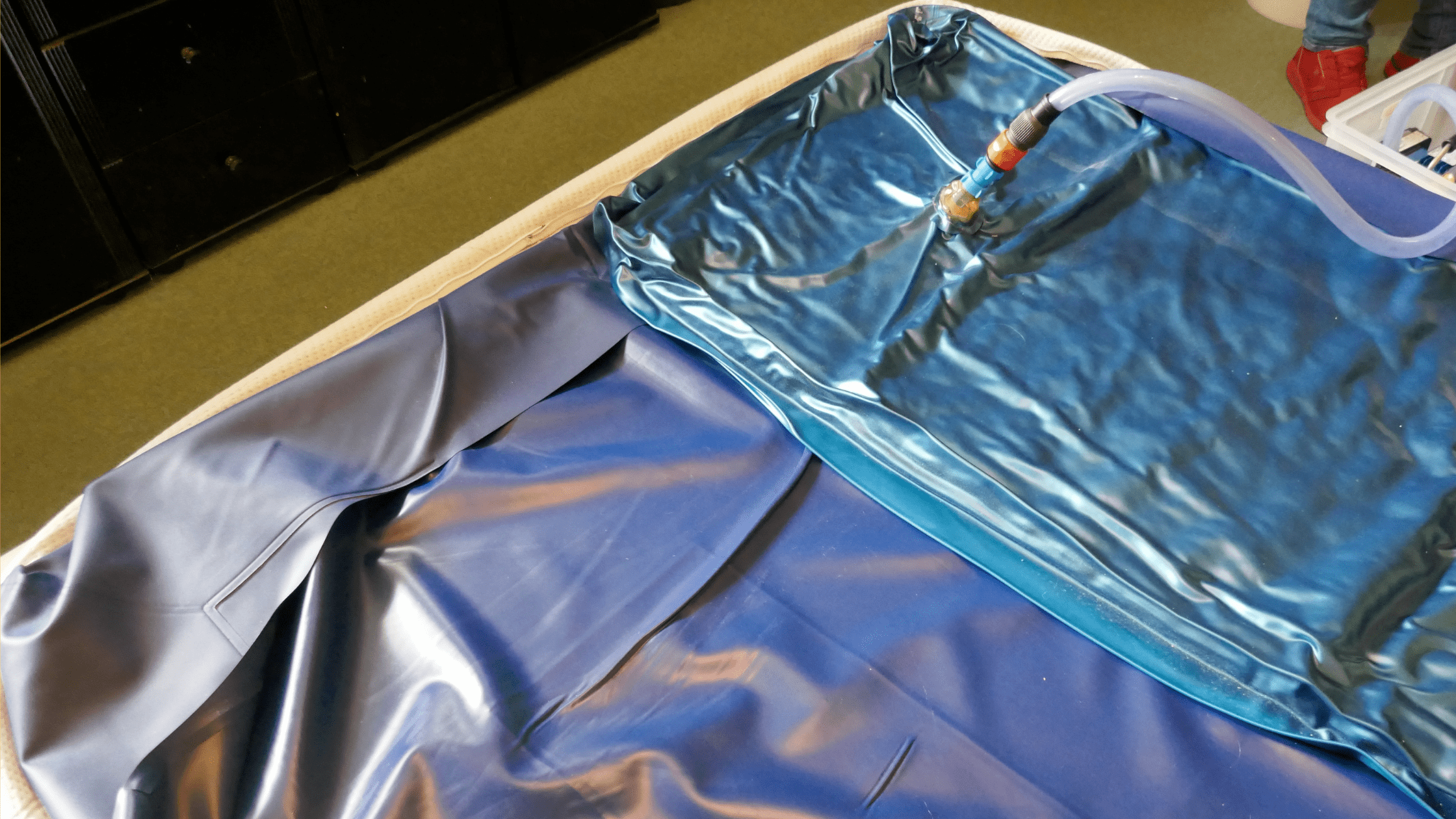You may remember waterbeds as a comfy cushion. And you might even remember their alternative name “pleasure pit”. They were the rage for so many years ago but what exactly happened? Read on to know if waterbeds still have a place in the market in the age of foam mattresses and air beds.
TL;DR
Yes, they do. In fact, they never stopped making them. There are still some sleep manufacturers producing and selling waterbeds, but they’re not as popular as they once were.
What Happened To Waterbeds?
To clarify, there are still some mattress manufacturers producing and selling waterbeds. They’re not nearly as popular or common as they were, but they’ve still got a presence. To answer what exactly happened to waterbeds, we have to backtrack a little bit. Back in the late ’80s, the waterbed industry had reached around $2 billion. and accounted for about 12% to 15% of the sleep mattress market in the US. This was assumed to be the peak of waterbeds.

Demand for waterbeds went downhill afterwards. As it were getting more popularity, it grew more and more unpopular among households for practical reasons:
1. Leaks – There can be so many potential ways to cut the bed allowing water to seep through. You know, if your cat is seasick and sticks their claws to your bed or if you leave behind a pointed earring and sleep on it. One misstep and you are looking at a flood. It got to the point where many landlords refused to allow waterbeds in apartments. In fact, you can check your lease agreement to see if your landlord allows “water-filled furniture” in the premises.
2. Weight – Waterbeds can weigh over 2,000 pounds when filled with water, so you can’t move them without draining them first.

3. Waves – Other people were not fond of the waves generated by moving around in bed. Rolling over on a waterbed sends waves through the mattress to the other side, which could wake up your partner or you. You probably wouldn’t be able to use a waterbed in your bedroom if you move around when you sleep.
4. Expensive – Waterbeds, or “all-water” beds that follow the old-school design from the 70’s can cost about $1,500 which is why they struggle to survive in the age of cheap mattresses.
5. Maintenance – it was no question that moving them around is a back-breaker. But maintenance was another thing. When the mattress needed to be drained, either an electric pump or some other siphoning trick was needed.
What We Know About Waterbeds
Waterbeds actually have a long history than one would imagine. It is believed that they first appeared 3600 BCE with Persian goat-skin mattresses filled with water. During the 19th century, hospital patients slept on waterbeds made of rubber.
Waterbeds with vinyl mattresses were invented as a master’s project at San Francisco State University by Charles Hall in 1968 after his failed liquid furniture experiments with JELL-O and cornstarch gel. This water-filled vinyl mattress version is the one most credited for the modern-day waterbed and the basis for future iterations.
In time, Hall’s “Pleasure Pit” bed was sold in 32 retail locations across the state. A flood of similar designs then quickly followed. It’s no secret that sex was a big selling point. It was a hit for couples looking for some action. “Two things are better on a waterbed. One of them is sleep.” explains an Aquarius advertisement. Another ad says, “She’ll admire you for your car, she’ll respect you for your position, and she’ll love you for your waterbed.”
But it wasn’t just pleasure that the waterbed was known for. Allergy sufferers liked the dust-free mattresses, while back pain sufferers liked the free-floating beds. Then came novelty frames, bunk beds, circular love nest beds, and even doggie waterbeds.
Among the innovations were “baffles” that reduced wave motion caused by many beds, which solved the unique problem of people getting seasick in their own beds.
These days, the waterbed market is still going, albeit on a much, much smaller scale. Mattress models are lighter than the models of decades past, and come with nifty accessories like foam padding and interior fibers that further cut down on the wave effect. They’re also outfitted with tubes or “bladders” that take in water rather than the entire mattress, making the experience less like filling an enormous water balloon.
It’s no secret that waterbed customers are loyal to their retro trend. But enthusiasm alone won’t get waterbeds back into the mainstream. Retailers say even the name “waterbed” has negative connotations. Because of that, they sometimes call them “flotation beds.”
Where Can You Still Buy Them
Umma’s mistaken. Even though it’s no longer 1989, you can still buy waterbeds in many stores. You can find them offline at the nearest mattress store near you or you can find them online at Amazon, Walmart, Waterbed Outlet, Sam’s Club, Afloat and many others.
